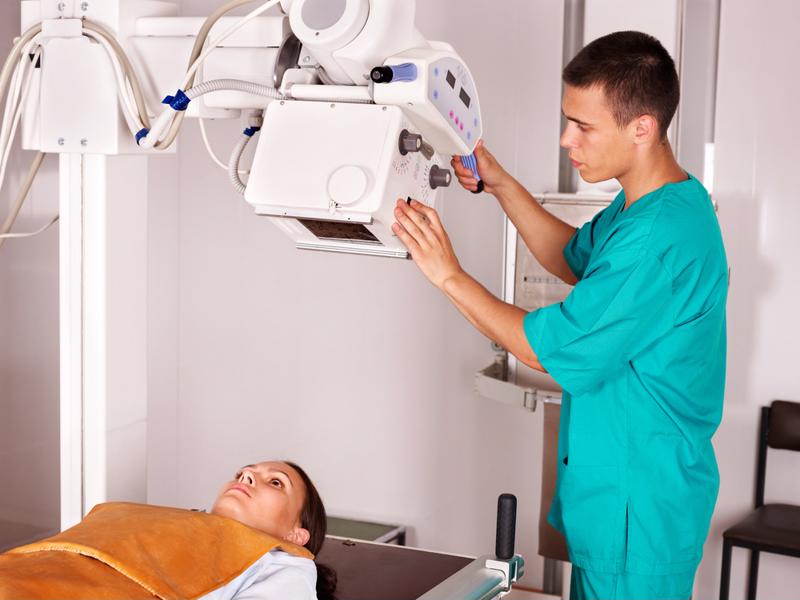The healthcare field brings many opportunities for individuals looking to enter the industry. The real challenge lies in deciding which path to take. A major component in making that choice involves knowing the difference between positions. Physician assistant and nurse practitioner jobs carry many similarities, and distinguishing between the two allows professionals to determine which career path would best suit their needs, interests and lifestyle. Discover the factors that make NPs and PAs unique:
Education
One of the key differences between these two careers lies in education. Nurse practitioners have both a bachelor’s degree and master’s degree or even a doctoral degree. They gain this education through nursing school. According to Nurse Practitioner Schools, the philosophies of these institutions allow NPs to graduate with a patient-centered view of care. In addition to treatment and diagnosis duties, their holistic approach includes disease prevention, health education and counseling that caters to the patient’s lifestyle.
NP education allows for greater focus than that of a PA. NPs may undergo schooling for the specific fields in which they are interested and plan to work. This may include geriatrics, psychiatric, pediatrics and women’s health. As Nurse Practitioner Schools explained, NPs must complete 500 didactic hours and 500-700 clinical hours in their specialty areas before officially entering their careers. However, many NPs take a more general approach to their training. According to the American Association of Nurse Practitioners’ 2013-2014 National Nurse Practitioner Practice Site Census, 86 percent of NPs are trained to work in primary care.
NPs must recertify every five years, which they can do in two ways. The experience-oriented route requires NPs to complete at least 1,000 hours of clinical practice in addition to 75 to 150 continuing education units in their specialties. Otherwise, they can take an exam.
PAs earn the same level of education, advancing from a bachelor’s degree to a master’s degree. However, they travel this path through medical school, after which they take a national exam called Physician Assistant National Certification Exam (PANCE). The key difference from nursing school is that medical school graduates use a disease-centered model in which treatment, diagnosis and assessment practices are based on biological elements of the patient’s well-being.
As the National Commission on Certification of Physician Assistants explained, PAs are on a six-year recertification cycle, though many are switching to a new 10-year plan. They must pursue 100 hours of continuing medical education every two years and complete the recertification exam, Physician Assistant National Recertification Exam (PANRE), at the end of their cycles, whether it be six or 10 years.
 NPs and PAs must acquire at least a master’s degree.
NPs and PAs must acquire at least a master’s degree.Job duties
NPs and PAs share many of the same responsibilities. Both professionals can make diagnoses, develop treatment plans, order diagnostic tests, write prescriptions and aid with care coordination. However, the duties depend on practice status state laws and the medical facilities in which the professionals work.
The work environment is where individuals in these roles see key differences. NPs do not necessarily require supervision, giving them greater independence in the choices they make on the job. However, this varies depending on the NPs level of education, certification and state laws.
Additionally, while NPs can work in specialty areas, many opt for primary care careers. According to the 2013-2014 National Nurse Practitioner Practice Site Census, some of the top locales where NPs work call on their primary care skills, including private physician practices, hospital outpatient clinics and community-based primary care settings.
PAs do not need to enter a residency program, but they must work under the authority of a doctor. According to the Mayo Clinic, PAs can legally write prescriptions in the majority of the U.S., but whether they actually perform this and other duties in their jobs may depend on the facility in which they work. Additionally, with their more general education, PAs typically work in environments that see a variety of care needs. For instance, PAs often find jobs in emergency medicine, general surgery and orthopedics.
 Both NPs and PAs can order diagnostic testing, such as x-rays.
Both NPs and PAs can order diagnostic testing, such as x-rays.Work-life balance
Because NPs often have the option to work independently and not under the supervision of another healthcare provider, they typically have more control over their schedules. In fact, flexibility is one of the main perks of this career.
PAs, on the other hand, work hours similar to those of a doctor because they must remain under the healthcare provider’s supervision. This means they may work nights, weekends and early mornings or be on call.
To be sure, the medical facilities where PAs and NPs work play a crucial role in work-life balance. For instance, a PA may partner with a doctor who only works 9 a.m. to 5 p.m. Meanwhile, if an NP is employed at an understaffed facility, he or she may put in a lot of hours to meet the demand for care. That’s why finding the right location is so important for healthcare professionals.
Career outlook
Both occupations have plenty of opportunities for growth and job diversity. Beyond being able to work in just about any type of medical facility, these healthcare professionals can also explore the states. Travel nursing jobs are available to locum tenens nurse practitioners, and physician assistant jobs also yield opportunities for locum tenens positions across the country.
With an average salary of $102,670, The U.S. Bureau of Labor Statistics estimated that NP job opportunities will grow 31 percent by 2024, which is much faster than average. Individuals aiming to find employment in this career path would find the most opportunities in New York, California, Texas, Florida and Massachusetts.
PAs, on the other hand, earn an average salary of $95,820 and will see job growth of 30 percent in the same time period, which is still above the national average, according to the BLS. States with highest employment for PAs include New York, California, Texas, Florida and Pennsylvania, respectively.
While nurse practitioners and physician assistants have many similarities, there are also key differences that make them unique in the healthcare industry. Overall, both professions bring benefits to medical facilities and can contribute to a well-rounded care team.


Physician Assistants are taught under the medical model. Meaning their learning is inline with that of a physician. Nurse Practicioners are taught nursing which is very different and many of these advance degrees APRN, DNP etc are obtained online with little clinical and real life experience. As an MD who has precepted both, I can honestly say there is a vast difference in the breadth of knowledge and capablity between PAs and NPs. Quite frankly, I feel it’s insulting to compare the 2 professions. Nurses, with their numbers and union backing have created this inflated role with very substandard metrics. It’s scary and actually unsafe, that NP’s are allowed to prescribe and run practices without much medical knowledge or clinical training. There needs to be more regulation in this industry for the patients sake
Union backing?
I have been an Rn for 26 years…hopital settings…never have I worked in a facility
where there has been a Nurses union.
I agree with Matthew T. Where I am, I am finding it difficult to get a first job. They say they prefer NP because they are independent. Many of them have little to no knowledge regarding pathophysiology. They simply practice based on protocol. Not to mention they do 500 didactic we do way more than that and have a minimum of 1,000 patient contact hours.
All nurse practitioners have studied pathophysiology in their undergraduate and graduate degree programs. Please do not smear my profession with your ignorance. It does no good to confuse those we serve. Over my 42plus years in nursing, of which I worked 22 as a NP, I had great colleagues. No one bashed another’s profession. It would perhaps surprise Matthew T that many times in my career I diagnosed a condition missed by the physician. Matthew T maybe you’re not a team player. We are not threatening your job. There are plenty of Americans with acute and chronic health care problems for all of us.
I do not remember when I have read an article with so much misinformation. It is breathtaking. The primary difference between NP’s and PA’s is the high level of education that NP’s must have? “As Nurse Practitioner Schools explained, NPs must complete 500 didactic hours and 500-700 clinical hours in their specialty areas before officially entering their careers”. How can one make this statement without immediately following it with the educational requirements for a PA? Well, let me tell you the requirements. A PA needs 1000 didactic hours (not 500, like a NP), and 1000 clinical hours (not 500-700, like a NP). Kindly study the issue before wantonly publishing nonsense. https://www.thepalife.com/physician-assistant-vs-nurse-practitioner-vs-medical-doctor/
Correction: PA’s need 2000 hours of clinical hours (to a NP’s 500-700 hours). See link in the comment above.